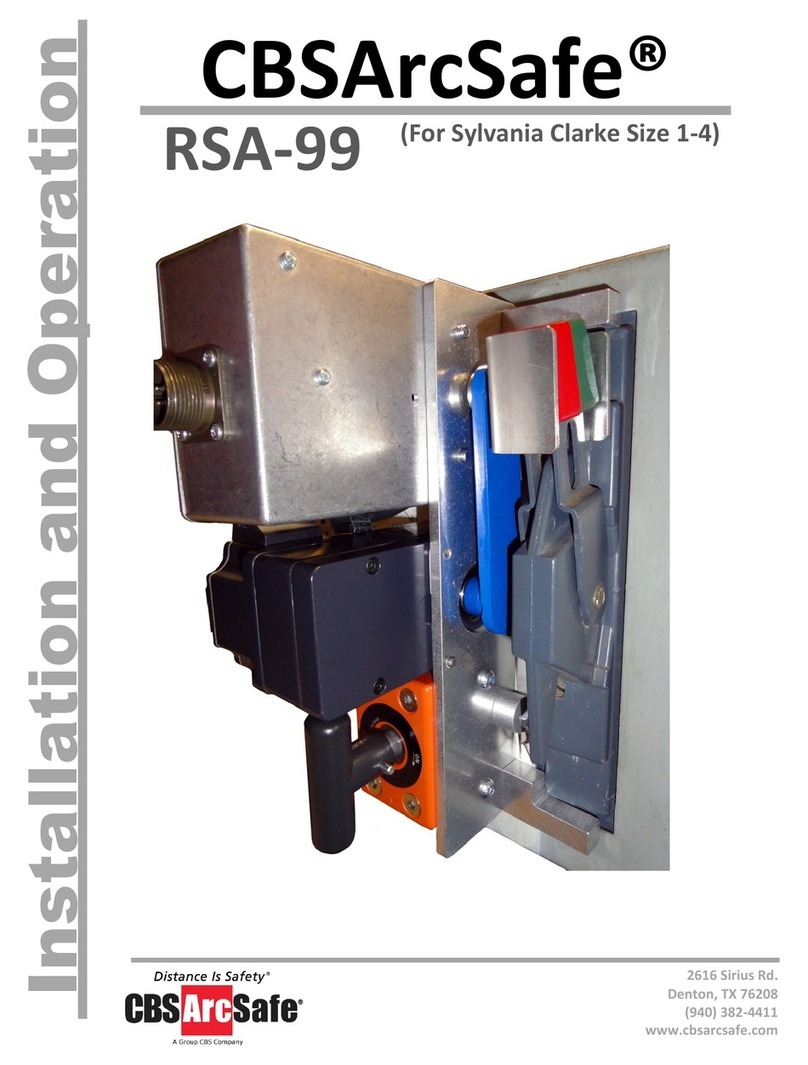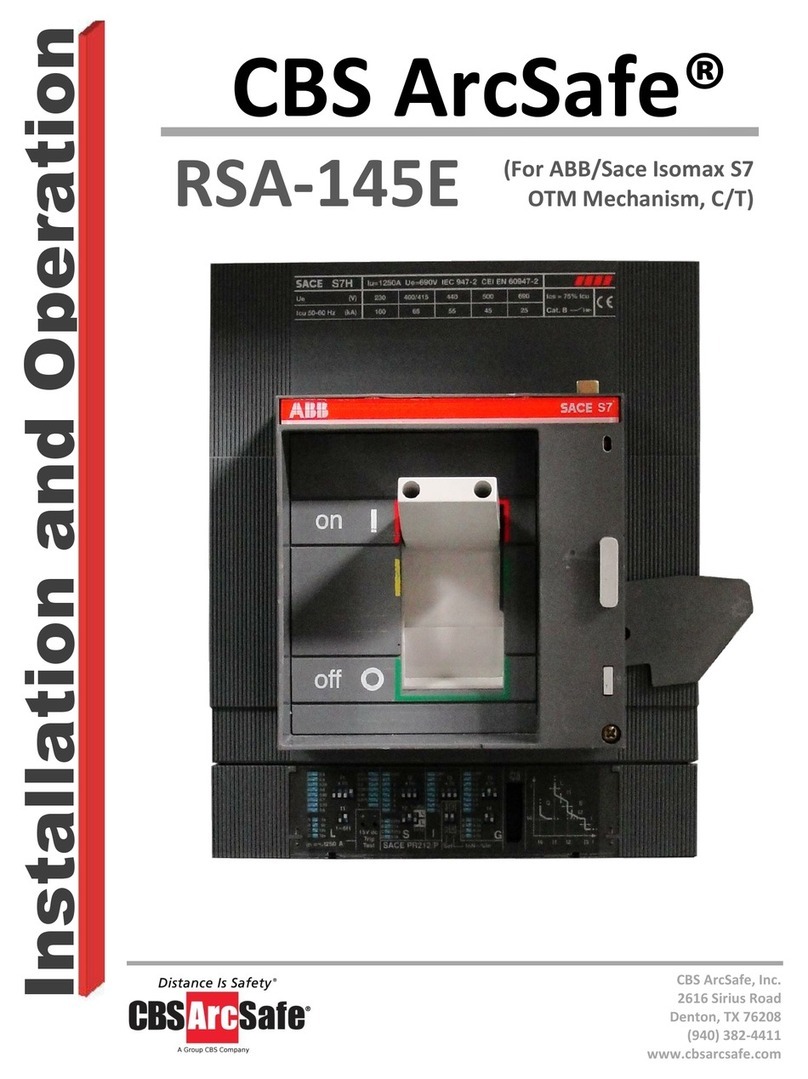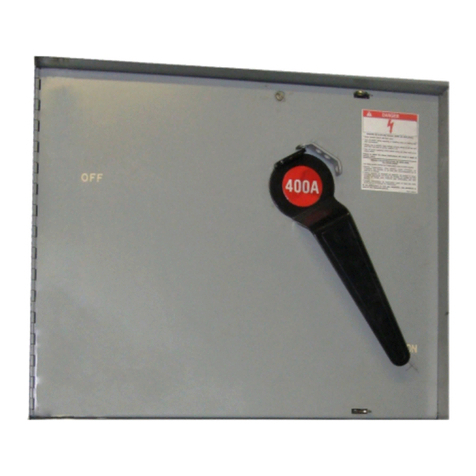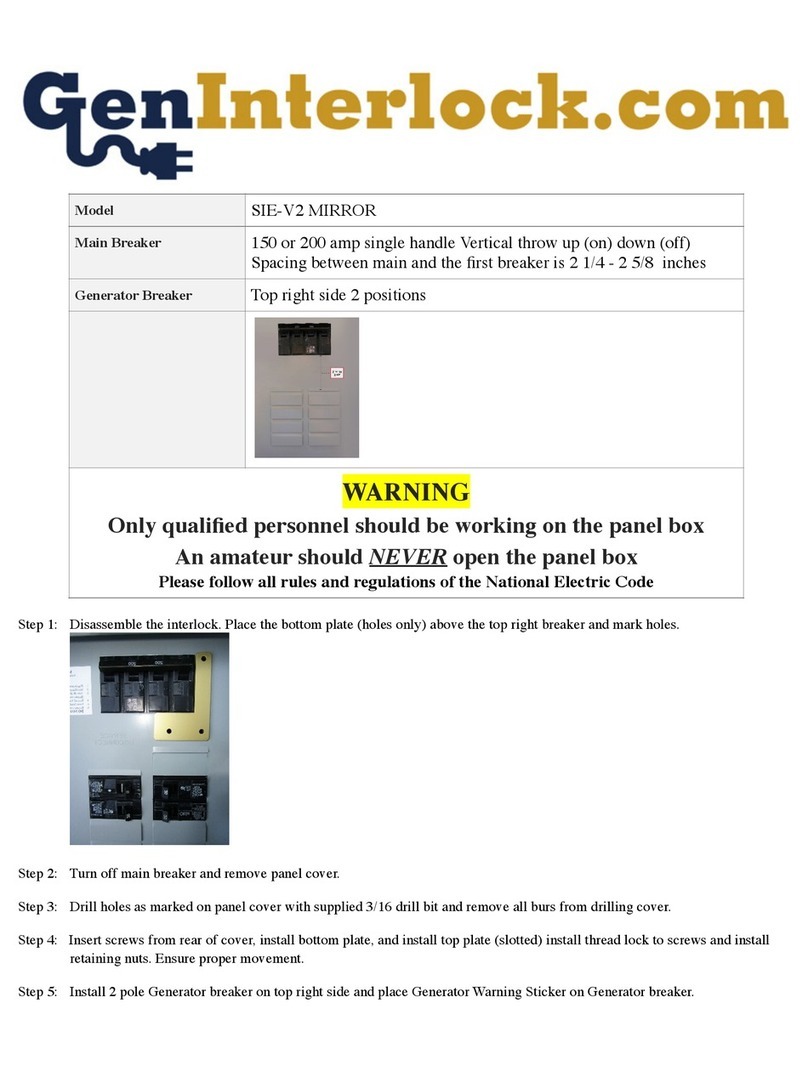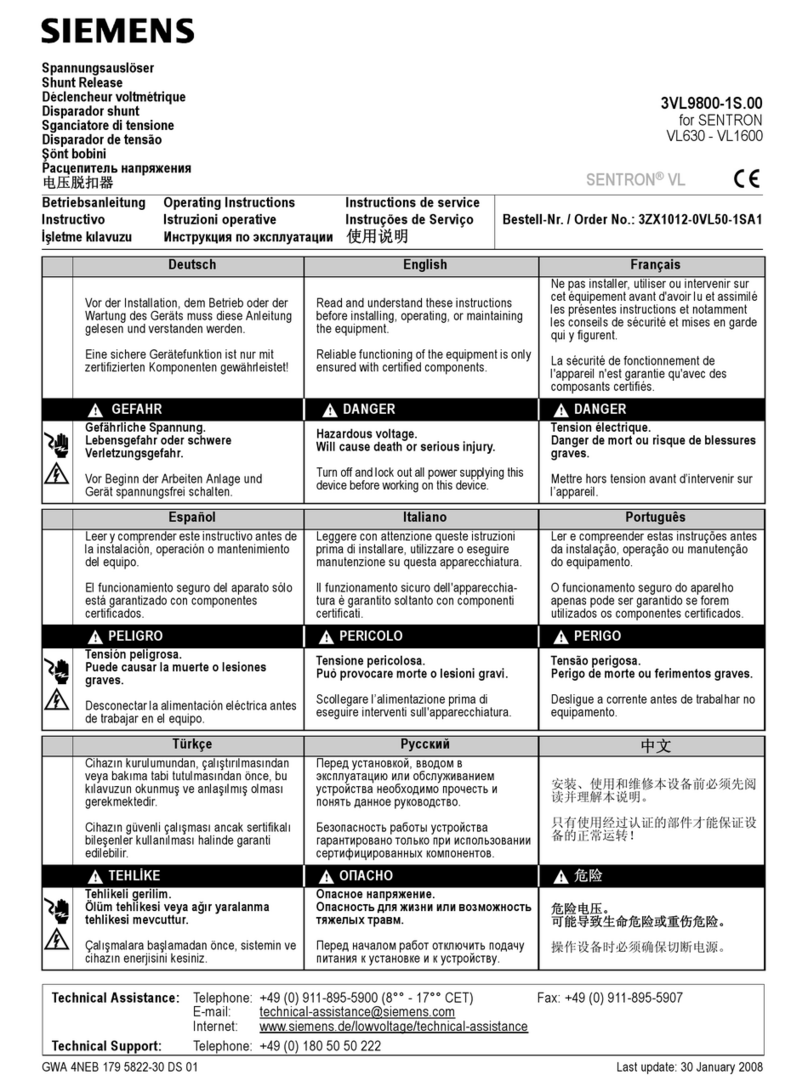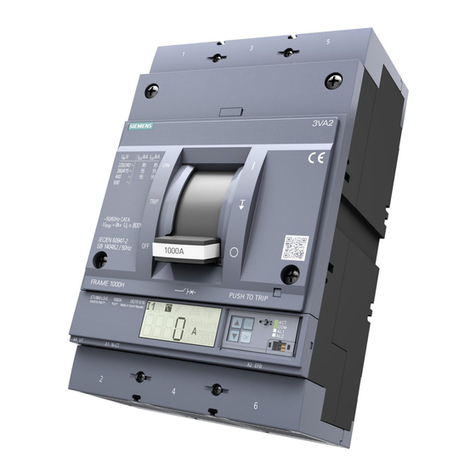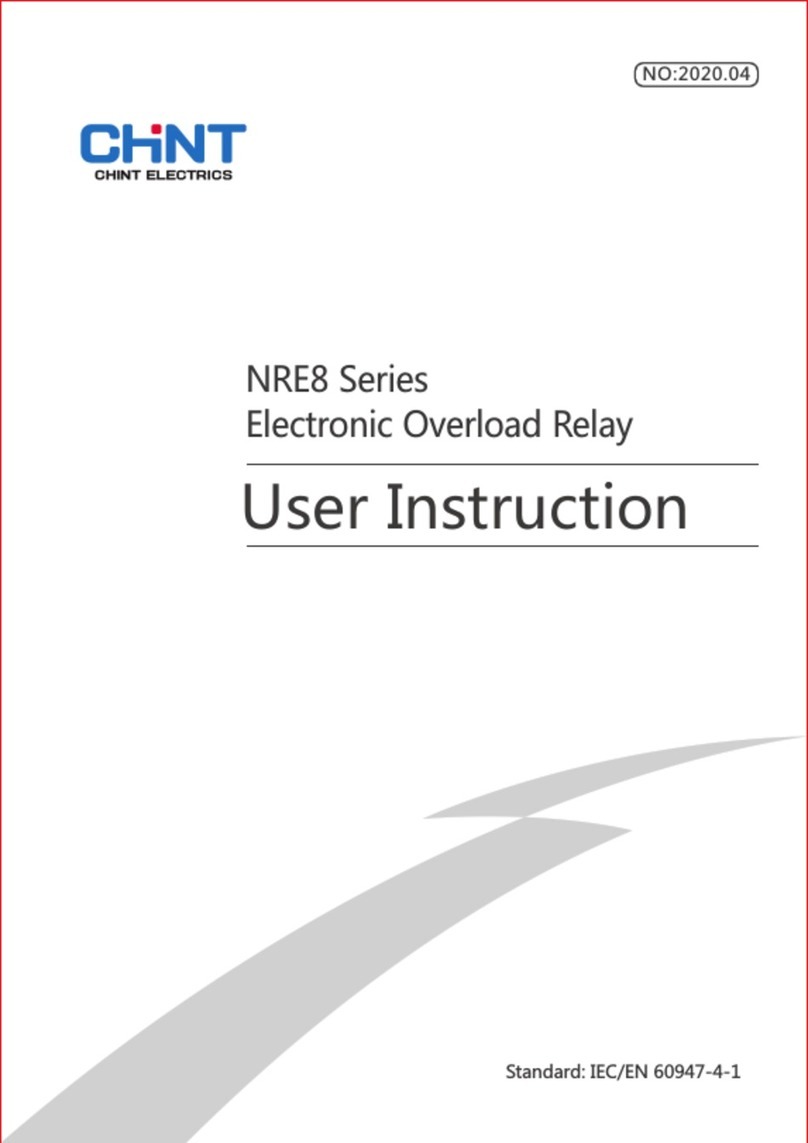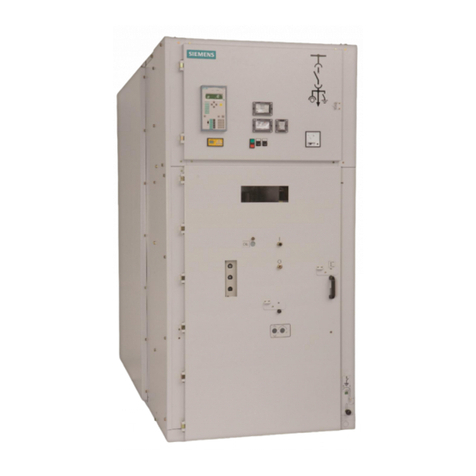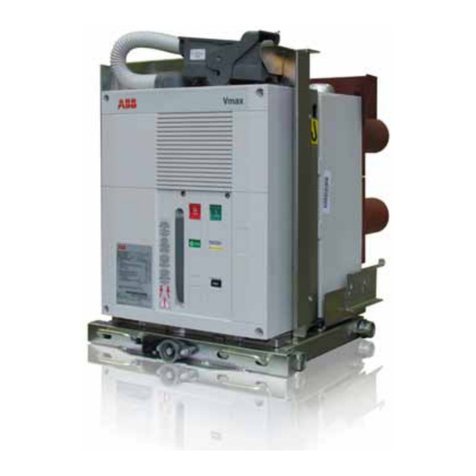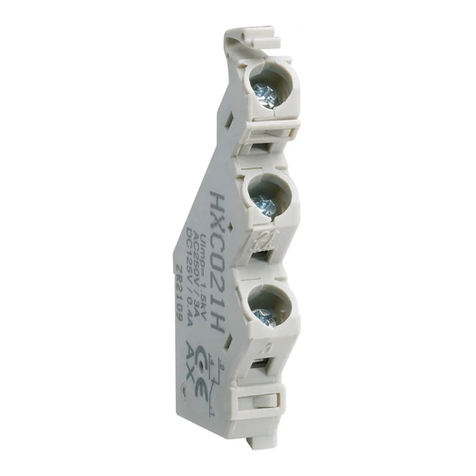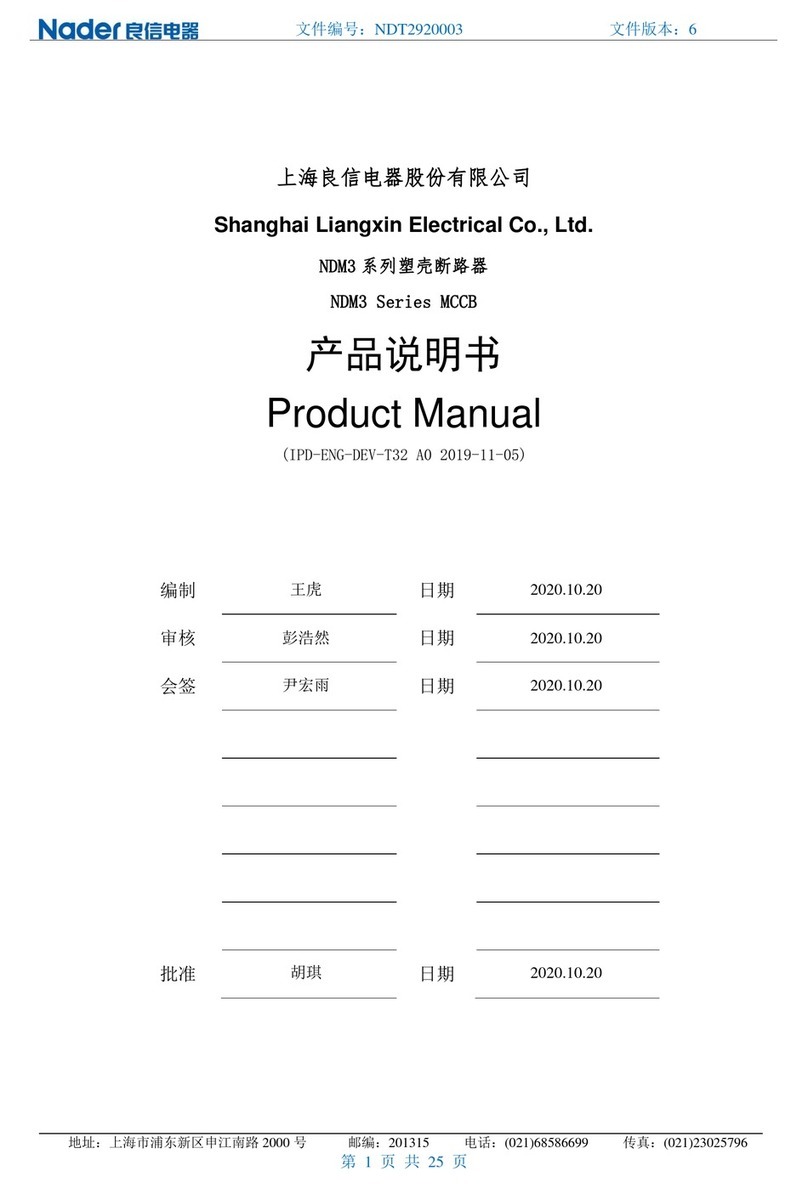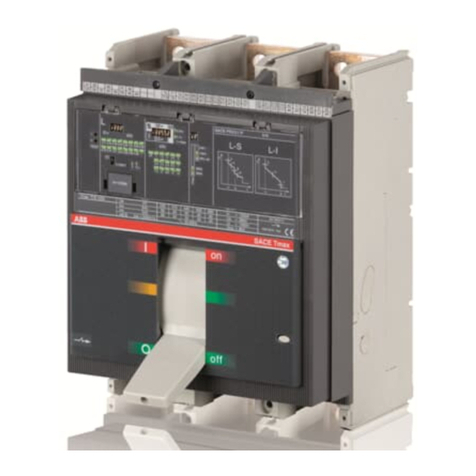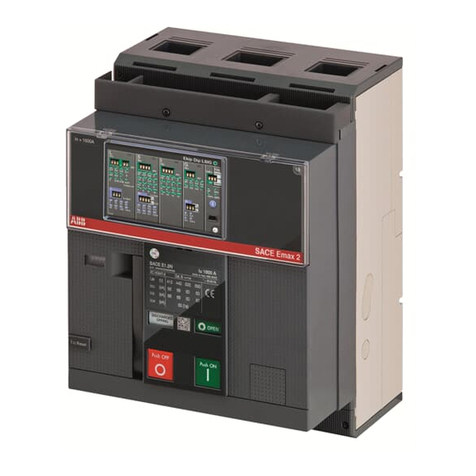CBS ArcSafe RRS-4 User manual

CBS ArcSafe®
RRS-4
Technical Manual
P.O. Box 550
Argyle, TX 76226
(940) 382-4411
www.cbsarcsafe.com
With SMART RACK ™Technology

Published by CBS ArcSafe®, a division of
GroupCBS, Inc. P.O. Box 1557
Gainesville, Texas 76241, USA
CBS ArcSafe, Inc.
2616 Sirius Road
Denton, TX 76208
Copyright CBS ArcSafe®2011
Printed in the United States of America
Reproduction, adaptation, or translation without prior written permission is prohibited except as is allowed by law.
More products by CBS ArcSafe®
RRS-1 –Remote Racking System for rotary type mechanisms
The RRS-1 is a universal remote racking system capable of removing and inserting
low and medium voltage draw out rotary circuit breakers while the operator remains
outside the arc flash boundary. This device is portable and user friendly and requires
no modifications to the existing switchgear or circuit breakers. Each system can be
custom designed to fit your particular needs.
RRS-2 –Remote Racking System for extraction type mechanisms
The RRS-2 is a universal remote racking system capable of removing and inserting
low and medium voltage non-rotary circuit breakers while the operator remains
outside the arc flash boundary. This device is portable and user friendly and requires
no modifications to the existing switchgear or circuit breakers. Each system can be
custom designed to fit your particular needs.
RRS-3 –Single Application Remote Racking System
The RRS-3 system is a single application remote racking system which allows the
operator to install and remove a breaker while standing up to 150 ft away using the
included wireless radio remote control. This system is a more portable and
lightweight alternative to the RRS-1/2 for users with switchgear in extremely hard to
access areas.
RSO –Remote Switch Operator
A remote switch operator is the power and control console for service personnel to
remotely charge, close, and/or trip circuit breakers from a safe distance using a CBS
ArcSafe® RSA. The RSO can be used as a stand-alone device for use with a remote
switching system, or in conjunction with the CBS ArcSafe® remote racking system for
complete charge, close, trip, and racking operations. Each CBS ArcSafe® remote
switch operator can also be operated with an optional radio remote wireless
pendant station.
RSA –Remote Switch Actuator
A remote switch actuator allows service personnel to charge, close, and/or trip
circuit breakers from a safe distance using a CBS ArcSafe® RSO. The remote switch
actuator attaches to the circuit breaker and may mechanically assisted by magnets
without the need for any modification to your switchgear. After setup and
installation the RSO controls the RSA.

RRS-4 Technical Manual iii
© 2011 CBS ArcSafe®
Table of Contents
About the User’s Guide.....................................................................................................2
1.0 Getting Started ...........................................................................................................3
2.0 Navigating the Display ................................................................................................4
2.1 Main/Startup Screen....................................................................................................... 4
2.2 Hotkeys ........................................................................................................................... 5
2.3 Navigation Buttons ......................................................................................................... 5
2.4 Selection Indicators......................................................................................................... 6
3.0 CCM Mode..................................................................................................................7
3.1 Attention Prompts .......................................................................................................... 7
3.2 CCM Setup Main Screen ................................................................................................. 8
3.1.1 Amps Tmrs .............................................................................................................................9
3.1.2 Mode....................................................................................................................................10
3.3 CCM Flowchart of Operations....................................................................................... 11
4.0 SEK Mode .................................................................................................................12
4.1 Breaker Select ............................................................................................................... 13
4.1.1 Main Type 1 .........................................................................................................................15
4.1.2 Selected Breaker Data Preview............................................................................................17
4.1.3 Selected Breaker Direction Preview ....................................................................................18
4.2 Failed to Count..........................................................................................................19
4.3 SEK Flowchart of Operations ........................................................................................ 20
5.0 Breaker Name Entry..................................................................................................21
5.1 Breaker Names.............................................................................................................. 22
6.0 Breaker Data Entry....................................................................................................24
6.1.1 Unit Setup Test/No Test Position Configuration .................................................................26
6.1.2 Unit Setup Configuration Data for the Test/No Test Position .............................................27
6.1.3 Breaker Select......................................................................................................................29
6.1.4 Breaker Test/ No Test Position Configurations ...................................................................31
6.1.5 Breaker Setup Configuration Data for the Test/No Test Position .......................................32
6.2 Unit and Breaker Setup Flowchart of Operations ........................................................ 34
7.0 Troubleshooting Guide..............................................................................................35

About the User’s Guide
This user’s guide describes the functions and features of the CBS ArcSafe® RRS-4. This
technical document is intended to act as a simplified reference for users of the
equipment - allowing for safe, quick, and efficient use of the RRS-4 features.
Before You Begin:
DANGER!
*This is a red hazard alert warning box; red hazard alert boxes contain information
pointing out potential hazards to personnel and equipment.
ATTENTION
This is a green information box; green information boxes are used to place emphasis
on valuable information the user will want to pay particular attention to.
CBS ArcSafe, Inc.
2616 Sirius Road
Denton, TX 76226
Tel: 877-472-3389
Fax: 940-382-9435
Website: www.CBSArcSafe.com
Email: info@CBSArcSafe.com
DANGER!
*Ensure that personnel using this equipment are adequately trained in the
operation of the switchgear they are planning to work with; that they are correctly
stationed outside the arc flash boundary; and that they comply with all applicable
Federal, State, Local, and In-house safety regulations and procedures. Attention
should be given to distance, angle, and personal protective equipment (PPE).
DANGER!
*Ensure that switchgear is properly maintained and in good working order before
using the RRS-4 on your switchgear. Contact your local group CBS service provider
at www.gcbs.com to assist in proper care and maintenance for your switchgear.

RRS-4 Technical Manual 7/20/2011
1.0 Getting Started
The CBS ArcSafe® RRS-4 Remote Racking System is an upgraded version of the standard
RRS-1 Remote Racking System for rotary style breakers. The RRS-4 boasts many of the
same structural and mechanical components as the CBS ArcSafe® RRS-1 unit, which
make it the most portable, easily adjustable, and user friendly Remote Racking System
in the industry today. What makes the RRS-4 different from its RRS-1 counterpart, and
any other remote racking system on the market for that matter, is that it is operated
using a dual mode, source programmable, Programmable Logic Controller (PLC) based
control system.
This new PLC based control system offers two operating modes to choose from: CCM
Mode (drive motor current sensing mode) and SEK Mode (drive motor revolution
counting mode). Users are given the option of which control mode to choose upon
machine startup and can switch between the two during operation of different
switchgear.
CCM mode is a truly universal operating mode capable of racking virtually any rotary
style breaker and requires minimal setup. In SEK mode, users create a custom profile
for each breaker style being operated that includes real-time breaker location feedback.
Both modes are considered “Source Programmable”, meaning that all setup and
operation can be done in the field without factory assistance by following the setup
procedures detailed in this manual. Each of these two modes will be discussed in
greater detail later in this manual, for more specific operating information for each of
these modes please see the appropriate section of the manual.
The RRS-4 is powered utilizing an AC/DC power system, meaning that the unit can be
operated using standard 120VAC wall power or the internal batteries (which can provide
approximately 30-60 racking operations depending on the application) when wall power
is not available. The RRS-4 comes standard with both a corded 35’ pendant station
(extended lengths available) and a wireless radio remote pendant station capable of
operating the unit from over 100’ away.

RRS-4 Technical Manual 7/20/2011
2.0 Navigating the Display
The RRS-4 PLC based user interface is located on the top side of the control cabinet. The
user can navigate this 5.6” touch-screen display by simply pressing the appropriate on-
screen button. This section will detail the navigation buttons used to interface with the
RRS-4 control and their functions.
2.1 Main/Startup Screen
When the main power to the RRS-4 is turned on, the screen in Figure 1 will greet the
user. From this screen, the user can choose either of the two racking control options
offered on the RRS-4, as well as view CBS ArcSafe® contact information for any
questions they may have. The figure and descriptions below will detail the functions
available to the user from this screen.
Description:
1. Power Indicator –Informs the operator that the power is “ON”
2. CCM Mode –Selects motor current monitoring mode for the racking operation
3. SEK Mode –Selects motor revolution counting mode for the racking operation
Figure 1: Main startup screen

RRS-4 Technical Manual 7/20/2011
2.2 Hotkeys
Pressing any of the “Hotkeys” located on the right side of the display will navigate the
user directly to the corresponding selection regardless of the user’s current location.
Please see the following figure for hotkey functions:
2.3 Navigation Buttons
Inside many of the menus found on the RRS-4 users will find the following functions
shown below. This section will describe each of the buttons and its function. NOTE:
There are other navigation buttons throughout the software which serve a specific
purpose; these buttons will be labeled with function name.
Return:
Escape:
Navigate Up:
Navigate
Down:
Navigate to Startup:
Selects and
navigates to
applicable
highlighted
option.
Navigates the
operator to
the previous
screen
Navigate the
cursor up
through a list
of options
Navigate the
cursor down
through a list
of options
Located throughout,
this button will
navigate the operator
back to the main
startup screen
System:
System Settings
F1:
CCM Mode
F2:
SEK Mode
F3:
Breaker Profile Name Entry
F4:
Breaker Profile Data Entry
F5:
Blank
Figure 2: Hotkeys
Figure 3: Navigation buttons

RRS-4 Technical Manual 7/20/2011
2.4 Selection Indicators
When two options are available to choose from for many of the settings on the RRS-4,
the on screen menu will list next to each of these options one of the “coils” pictured
below. The shaded coil will indicate the current selection the user has chosen, while the
un-shaded coil will indicate to the user an option they have the ability to choose. Please
see the following figure for clarification.
Shaded Coil
Indicates the one of two
options that is selected
Un-Shaded Coil
Indicates the one of the
two options that is no
selected
Figure 4: Selection indicators

RRS-4 Technical Manual 7/20/2011
3.0 CCM Mode
CCM mode allows the operator to monitor the running current (in amps) during the
racking operation. Users can access the CCM Mode from the main screen or by pressing
the F1 hotkey. This section will detail how to setup CCM mode for a breaker racking
procedure.
ATTENTION
The RRS-4 can be controlled in CCM mode using either the hand control or radio
remote pendant station. Ensure that the selector switch on the side of the control
cabinet to choose between the two is set to the proper selection prior to operation.
3.1 Attention Prompts
When CCM mode is selected, a prompt will appear asking the user to verify that the
breaker to be racked is open. Once the breaker status has been verified to be open,
proceed to press the “OK” button.
Next, another prompt will appear asking the user to verify that the clutch has been set
properly. Once this has been done, proceed to press the “OK” button.
Figure 5: Breaker status safety prompt
Figure 6: Clutch setting safety prompt

RRS-4 Technical Manual 7/20/2011
3.2 CCM Setup Main Screen
Once the user has verified both safety prompts, the CCM Setup screen will appear
(Figure 6). Here, the operator can view and edit all values associated with performing a
racking procedure in CCM mode. This section will detail the navigation and data entry
for RRS-4 operation in CCM mode.
1. Amps –Displays the instantaneous running current of the drive motor at any
given time
2. Max –Displays the maximum current recorded during the present motor cycle
3. Mode –Press to switch between “Normal CCM” and “Manual”
Normal CCM –After the initial command is given, the drive motor will
run in the direction chosen by the user without interruption until motor
current exceeds a set value for a set amount of time
Manual –The drive motor will run without interruption until the
command is released
4. Direction Indicator –During drive motor operation, the “hand” will rotate in the
direction that the motor is currently rotating in
5. Reset –Resets the stored value of “Max” to zero. Can be used to zero the value
before, during, or after motor cycle
6. Main –Returns operator to startup screen
7. Amps/Tmrs –Navigates to the screen where values are set for both rotational
directions for maximum allowable current and maximum allowable time over
current value.
1.
2.
3.
6.
5.
4.
3.
7.
Figure 7: CCM setup main

RRS-4 Technical Manual 7/20/2011
3.1.1 Amps Tmrs
The “Amps Tmrs” button (Figure 6.7) navigates the operator to the screen previewed
below in Figure 7. Amps Tmrs allows the operator to make modifications to
install/remove amperages and timers that govern the CCM operation.
1. Install Amps –Sets the value for the maximum allowable drive motor running
current in the install direction
2. Remove Amps –Sets the value for the maximum allowable drive motor running
current in the remove direction
3. Install TMR –Sets the value for the maximum allowable time that the install
current can be greater than the set value
4. Remove TMR –Sets the value for the maximum allowable time that the remove
current can be greater than the set value
5. Back –Returns to CCM mode home
6. Direction –Navigates to the Install and Remove direction screen
Figure 8: Amps Tmrs modifications screen
1.
2.
3.
4.
5.
6.

RRS-4 Technical Manual 7/20/2011
3.1.2 Mode
Under CCM Setup, pressing "Mode" (Figure 6.3) allows the operator to switch from
"Normal CCM" and "Manual".
1. Direction –Indicates to the user the direction the drive motor will rotate when
an install command is given
Normal –The motor will turn clockwise when an install command is
given. The motor will turn counterclockwise when a remove command is
given
Reverse –The motor will turn counterclockwise when an install
command is given. The motor will turn clockwise when a remove
command is given.
2. Select –Press to toggle between “Normal” and “Reverse” motor rotation
3. Next –Navigates to the CCM home screen
When "Normal CCM" is selected, the operator sets the amp values for the unit to shut
off. When the operation starts, the unit will run until reaching the amp value and
shutoff.
1.
2.
3.
Figure 9: CCM Mode setup screen

RRS-4 Technical Manual 7/20/2011
Operating under "Manual", the operator must hold down the operation button and
release it when the breaker is in its desired place. In this mode, even though the
breaker may be fully installed or uninstalled, the unit will still continue to run if the
operator is still pressing down after the breaker is fully in desired location. The operator
will see that the Torque Guard clutch is not turning. This will be his indication to stop
the operation.
3.3 CCM Flowchart of Operations

RRS-4 Technical Manual 7/20/2011
4.0 SEK Mode
SEK Mode allows the operator to monitor the rotations during operation. The SEK Mode
may be accessed through the main screen or by pressing F2. The radio remote is
required for SEK Mode; the pendant works only in CCM Mode. Once entering the SEK
mode, the screen will prompt to make sure the breaker is open.
ATTENTION
SEK Mode requires the radio remote. While operating in SEK Mode, the pendant
remote will not operate. Ensure that the selector switch on the side of the control
cabinet to choose between the two is set to the proper selection prior to operation.
When SEK mode is selected, a prompt (Figure 9) will appear asking the user to verify
that the breaker to be racked is open. Once the breaker status has been verified to be
open, proceed to press the “OK” button.
Figure 10: Breaker status safety prompt

RRS-4 Technical Manual 7/20/2011
4.1 Breaker Select
Breaker names (section 5.0) and their individual data settings (in Breaker Data section
6.0) available for selection are displayed similarly to figure 10. The operator may select a
breaker saved in the RRS-4 for servicing. The SEK Mode gives the user space to define 12
different styles of breakers. To select the breaker model to be serviced, press on the
breaker model name to select it.
1. Breaker Model –One of four breaker models shown in figure 9. Press on breaker
model to be serviced
2. Main –Returns operator to startup screen
3. Next –Continue to next Breaker Select list page
1.
2.
3.
Figure 11: Breaker selection lists

RRS-4 Technical Manual 7/20/2011
A prompt like figure 11 will next appear to verify that the clutch has been set properly.
The operator may adjust the clutch setting (in pounds) by selecting the numerical box
and changing the number via the keypad provided after selection. Once the clutch
setting displayed is appropriate to the operation, press “OK” to continue.
Figure 12: Clutch setting safety prompt

RRS-4 Technical Manual 7/20/2011
4.1.1 Main Type 1
Once successfully selecting the breaker model to be serviced, the selected breaker,
along with the data previously entered for that specific model (see section 6.0), will be
loaded. The selected breaker model (GE 1200 used in this example) is displayed above
the mode (12.2).
1. Breaker Model –Breaker model selected from the Breaker Select screen to be
serviced
2. Mode –directional mode of rotation (Normal=CW, Reverse=CCW)
3. Status Loading Bar –Loading bar indicating operation completion percentage
4. Direction Indicator –During drive motor operation, the “hand” will rotate in the
direction that the motor is currently rotating in
5. Set –Value of counts set previous by the operator (8 counts = 1 complete
rotation)
6. Cnt –Up-to-date count number the RRS-4 is on
7. Idle –Motor status (in Figure 12, shows as idle/not running)
Figure 13: Main Type 1 data screen
1.
2.
3.
5.
6.
4.
7.
8.
9.
10.

RRS-4 Technical Manual 7/20/2011
8. Operation –Operation to be performed. Figure 11 shows that the breaker to be
serviced will be moved to the connected position
9. Main –Returns operator to startup screen
10. OK –Press “OK” to preview the breaker settings that have been previously saved
to the breaker model by the operator.
ATTENTION
Breaker settings may not be modified under this mode. See Breaker Data Entry
(section 6.0) to make any necessary changes to the breaker data.

RRS-4 Technical Manual 7/20/2011
4.1.2 Selected Breaker Data Preview
Once navigating through the breaker data and pressing "OK" (Figure 12.10), data (such
as seen in Figure 13) specific to that breaker model’s service operations will be
displayed. Again, these data screens are for preview only; to alter breaker data, the
operator must go to the Breaker Data Entry section (6.0).
1. Disconnect to Test –Value previously set by operator for racking the selected
breaker from disconnect to test position
2. Test to Connected –Value previously set by operator for racking the selected
breaker from test to connected position
3. Connected to Test –Value previously set by operator for racking the selected
breaker from Connected to Test position
4. Test to Disconnected –Value previously set by operator for racking the selected
breaker from Test to Disconnected position
5. Prev –Navigate to the previous screen, Main Type 1
6. Next –Navigate to the selected breaker’s operation settings governing the
operation rotation
Figure 14: Screen preview of breaker operation settings
1.
2.
3.
4.
5.
6.

RRS-4 Technical Manual 7/20/2011
4.1.3 Selected Breaker Direction Preview
Once finished looking over the operation settings, the operator may press “Next”
(Figure 13.6) to navigate to a separate screen displaying the mode previously specified
to that breaker by the operator. Rotation mode screen is displayed as shown in figure
14. In the example shown, the mode had been previously set to the normal/CW
installation direction.
1. CCW –Counter-clock wise, also designated as Reverse direction of installation
2. CW –Clock wise, also designated as Normal direction of installation
3. Next –Pressing “Next” will navigate the operator back to the Main Type 1 home
screen
Figure 15: Type 1 screen displaying direction of installation
rotation
1.
2.
3.
Table of contents
Other CBS ArcSafe Circuit Breaker manuals
Popular Circuit Breaker manuals by other brands
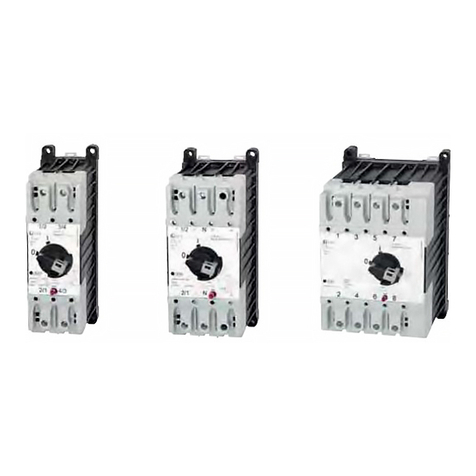
Cooper Crouse-Hinds
Cooper Crouse-Hinds CEAG GHG 624 Series operating instructions
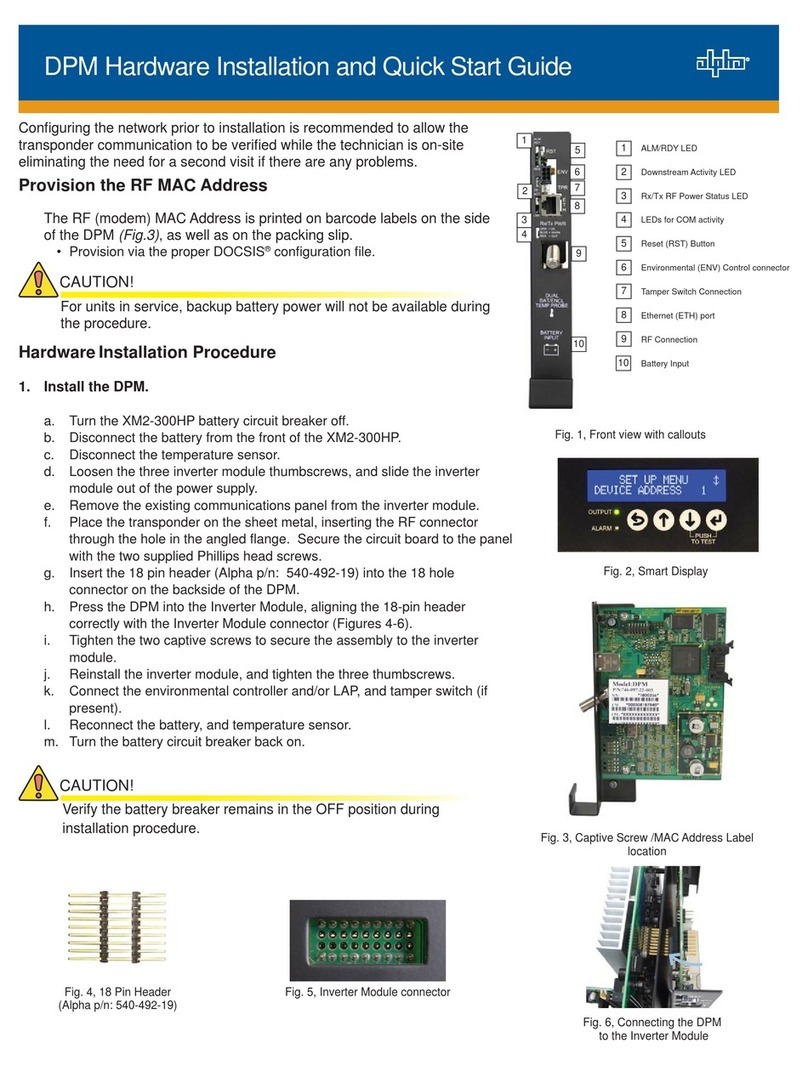
Alpha
Alpha XM2-300HP Hardware Installation and Quick Start Guide
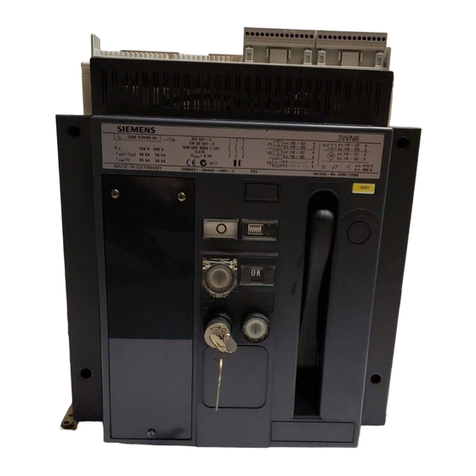
Siemens
Siemens 3WN6 operating instructions
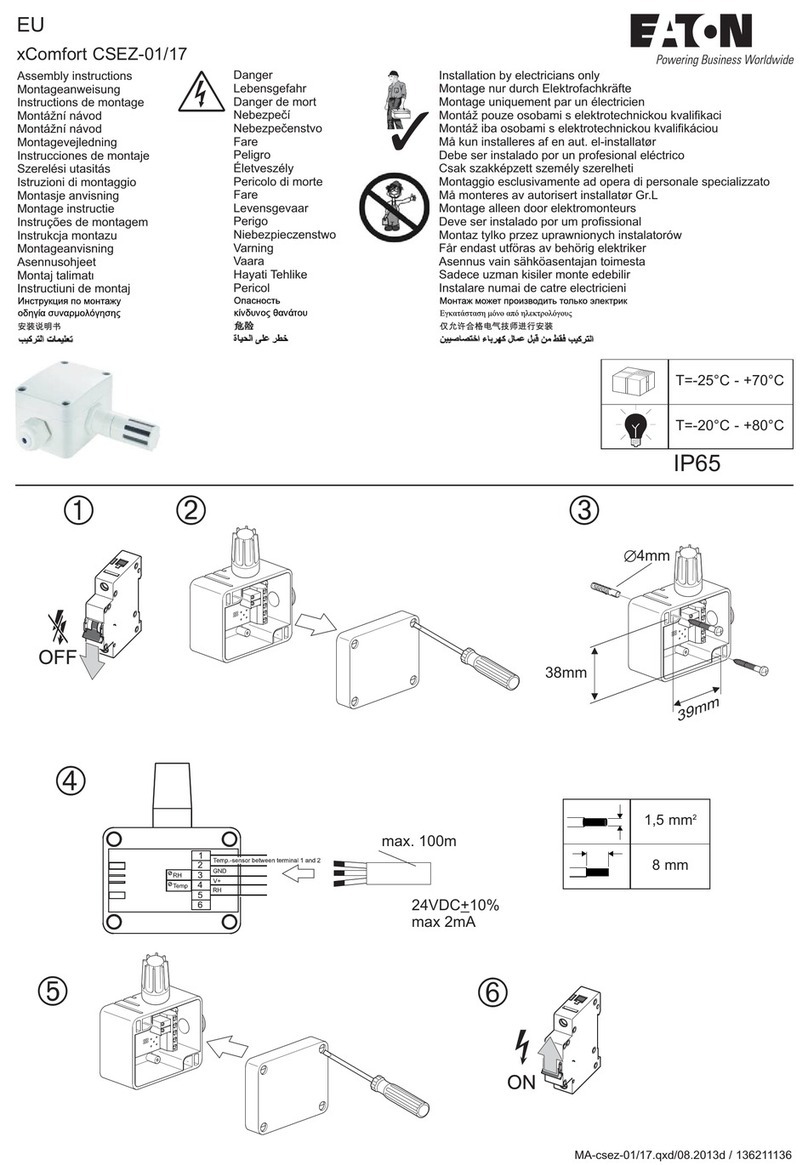
Eaton
Eaton xComfort CSEZ-01/17 Assembly instructions
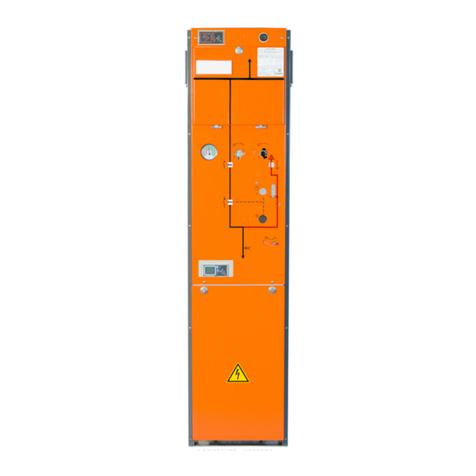
DRIESCHER-WEGBERG
DRIESCHER-WEGBERG VSS Addition to Operation and Assembly Instructions
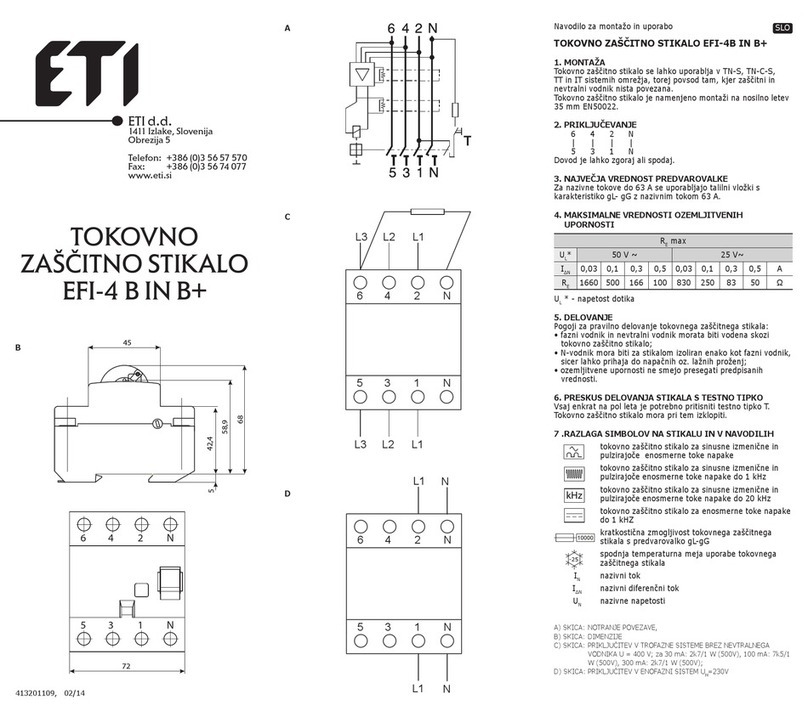
ETI
ETI EFI-4B Instructions for mounting
